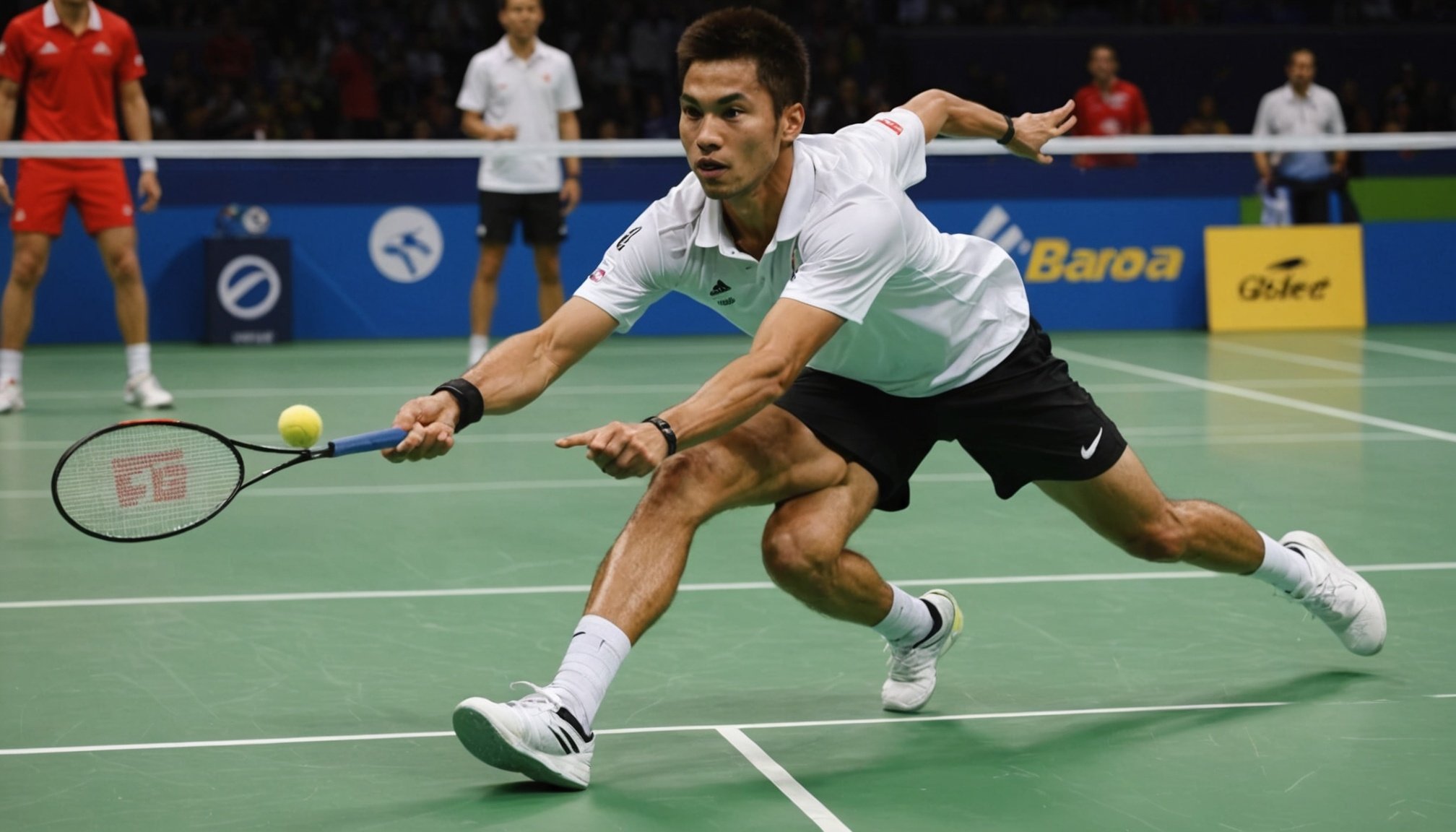Safeguarding Your Ankles from Injuries in Badminton: Top Strategies and Tips
Badminton, a fast-paced and physically demanding sport, requires quick movements, sharp turns, and rapid changes in direction, all of which can put significant stress on your ankles. Ankle injuries, particularly ankle sprains, are among the most common issues badminton players face. Here’s a comprehensive guide on how to protect your ankles and prevent these injuries.
Understanding Ankle Injuries in Badminton
Before diving into the prevention strategies, it’s crucial to understand the nature of ankle injuries in badminton. Ankle sprains, which involve the stretching or tearing of the ligaments around the ankle joint, are the most prevalent. These injuries often occur due to sudden landings, sharp turns, or slips on the court.
Also to discover : Boosting Team Spirit: Innovative Strategies for Roller Derby Players to Strengthen Teamwork
Common Causes of Ankle Injuries
- Sudden Movements: Badminton involves rapid changes in direction, which can lead to ankle sprains if not executed carefully.
- Poor Footwear: Wearing shoes that do not provide adequate support or traction can increase the risk of slipping and injuring the ankle.
- Inadequate Warm-Up: Insufficient warm-up and stretching can leave the muscles and ligaments unprepared for the demands of the game.
- Court Conditions: Playing on a court with uneven or slippery surfaces can significantly increase the risk of ankle injuries.
Pre-Game Preparation: The Key to Ankle Safety
Pre-game preparation is vital in preventing ankle injuries. Here are some strategies to help you prepare:
Warm-Up and Stretching
A thorough warm-up and stretching routine can significantly reduce the risk of ankle injuries. Here’s a detailed warm-up plan:
This might interest you : Score huge winter discounts on the best orby guns!
- Cardiovascular Warm-Up: Start with light cardio such as jogging or jumping jacks to increase blood flow and warm up the muscles.
- Dynamic Stretching: Move on to dynamic stretches like leg swings, ankle circles, and calf raises. These help in increasing the range of motion and reducing stiffness.
- Static Stretching: Finish with static stretches focusing on the calf muscles, Achilles tendon, and the muscles around the ankle joint.
### Example Warm-Up Routine
- **5-10 minutes of light jogging or jumping jacks**
- **Leg swings (front and back) - 3 sets of 15 reps each**
- **Ankle circles (clockwise and counterclockwise) - 3 sets of 10 reps each**
- **Calf raises - 3 sets of 15 reps**
- **Static stretches for calf muscles and Achilles tendon - hold each stretch for 20-30 seconds, 3 sets**
Proper Footwear
Wearing the right shoes can make a significant difference in preventing ankle injuries. Here are some tips for choosing the right footwear:
- Support and Stability: Look for shoes with good arch support and stability features.
- Traction: Ensure the shoes have a non-slip sole to prevent slipping on the court.
- Fit: Make sure the shoes fit well and are not too tight or too loose.
Training Strategies to Strengthen Your Ankles
Strengthening the muscles around your ankles can help in preventing injuries. Here are some training strategies:
Strengthening Exercises
Incorporate exercises that target the muscles around the ankle joint, such as:
- Ankle Weights: Use ankle weights to perform ankle extensions and flexions.
- Single-Leg Balance: Practice standing on one leg to improve balance and stability.
- Calf Raises: Strengthen the calf muscles through calf raises on a step or platform.
### Example Strengthening Routine
- **Ankle extensions and flexions with ankle weights - 3 sets of 10 reps each**
- **Single-leg balance - hold for 30 seconds, 3 sets per leg**
- **Calf raises on a step - 3 sets of 15 reps**
Proprioception and Balance Training
Proprioception, the ability to sense the position and movement of your body, is crucial for preventing ankle injuries. Here are some exercises to improve proprioception:
- Balance Boards: Use balance boards or BOSU balls to practice standing and moving on unstable surfaces.
- Agility Drills: Incorporate agility drills that involve quick changes in direction and speed.
On-Court Strategies
While playing, there are several strategies you can employ to reduce the risk of ankle injuries:
Proper Landing Techniques
Learning how to land correctly after jumps can significantly reduce the impact on your ankles.
- Knee Flexion: Land with your knees slightly bent to absorb the impact.
- Weight Distribution: Distribute your weight evenly on both feet to avoid putting too much stress on one ankle.
Court Awareness
Being aware of your surroundings on the court can help you avoid potential hazards.
- Watch for Slippery Spots: Be cautious of any slippery or uneven areas on the court.
- Use Footwork Drills: Practice footwork drills that involve quick turns and changes in direction to improve your agility and reaction time.
Post-Game Care and Recovery
After the game, proper care and recovery are essential to prevent further strain on your ankles.
Cooling Down and Stretching
A cool-down routine helps in reducing muscle soreness and preventing injuries.
- Static Stretching: Focus on static stretches for the calf muscles, Achilles tendon, and the muscles around the ankle joint.
- Foam Rolling: Use a foam roller to massage the muscles and improve blood flow.
Ice and Compression
Applying ice and compression can help in reducing swelling and pain if you do experience an injury.
- Ice Application: Apply ice to the affected area for 15-20 minutes, several times a day.
- Compression Bandages: Use compression bandages to reduce swelling.
Real-Life Examples and Anecdotes
To illustrate the importance of these strategies, let’s look at a real-life example. Patrick Mahomes, the quarterback of the Kansas City Chiefs, recently recovered quickly from an ankle injury during a game. Despite the injury, Mahomes continued to play without missing any snaps, thanks to his resilience and the team’s proactive measures, such as taping his ankle for added support during practice.
Practical Insights and Actionable Advice
Here are some practical tips and advice to help you safeguard your ankles:
Listen to Your Body
If you feel any pain or discomfort in your ankles, stop immediately and rest. Ignoring early signs of injury can lead to more severe problems.
Seek Professional Advice
Consult with a sports physiotherapist or a medical professional to get personalized advice on preventing and treating ankle injuries.
Stay Hydrated
Proper hydration is essential for maintaining healthy muscles and ligaments. Ensure you drink plenty of water before, during, and after your games.
Protecting your ankles from injuries in badminton is a multifaceted approach that involves pre-game preparation, on-court strategies, and post-game care. By incorporating these strategies into your routine, you can significantly reduce the risk of ankle injuries and enjoy a safer, more enjoyable game.
### Summary of Key Strategies
- **Pre-Game Preparation**:
- Warm-up and stretching
- Proper footwear
- **Training Strategies**:
- Strengthening exercises
- Proprioception and balance training
- **On-Court Strategies**:
- Proper landing techniques
- Court awareness
- **Post-Game Care and Recovery**:
- Cooling down and stretching
- Ice and compression
By following these strategies, you can ensure your ankles remain safe and healthy, allowing you to perform at your best on the badminton court.






